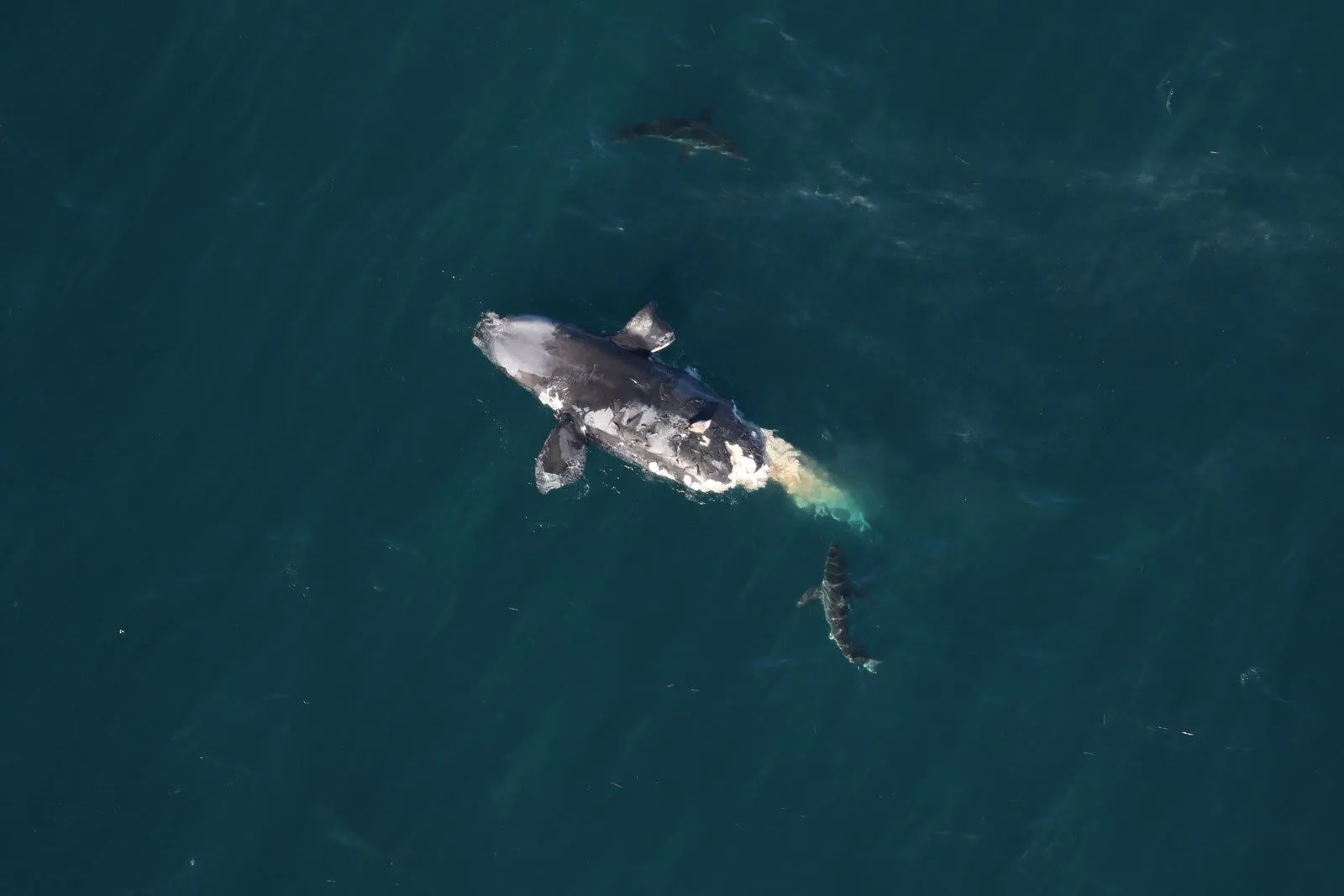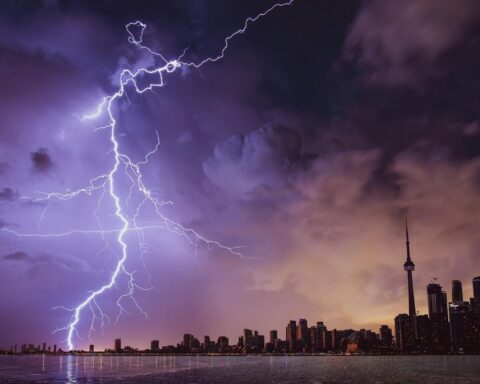Researchers on Thursday examined the carcass of a 1-year-old female north Atlantic right whale found dead offshore, looking for clues to her death. The whale is the December 2022 calf of north Atlantic right whale #4340, also known as Pilgrim. The 1-year-old had been seen looking healthy less than two weeks ago.
The crew of a cargo vessel on Tuesday spotted the dead juvenile and notified the Coast Guard, who notified NOAA Fisheries. On Wednesday, an aerial survey team from the Clearwater Marine Aquarium Research Institute searched and located the carcass about 20 miles off Tybee, in part by following the sheen its blubber left on the water. A team from the Georgia Department of Natural Resources responded, attached a satellite tag, and collected photos and samples to identify the individual. Sharks had heavily scavenged the whale carcass and were photographed circling it.
NOAA Fisheries hired Sea Tow of Savannah to haul the approximately 20,000-pound carcass to the north end of Tybee Thursday. The job required special equipment, including a bridle that was rigged for towing.
At Tybee’s Polk Street beach, local, state and federal scientists examined the carcass, removing pieces of some internal organs including the lungs to check for abnormalities. Results were not immediately available. The yearling was last seen free of gear and any injuries on Feb. 3, 2024, south of Cape Canaveral, Fla., near Daytona Beach Shores. That’s the same place she and her mother spent several weeks in the first few months of 2023. Calves typically stay with their mothers for about a year.
“Give the status of the carcass and the extensive scavenging, interpretation and results may be challenging,” Georgia DNR said in a prepared statement. “In addition, NOAA Fisheries has requested a hindcast which should be available in the coming days to help determine where this whale may have died and how far it has traveled.”
Wildlife managers planned to bury the whale, estimated at 26 feet long, on Tybee.
Right whales got their name from being the “right” whale to kill. They swim slowly, stay close to shore and float when dead. They were hunted nearly to extinction but made a partial comeback, with their numbers reaching 485 about a decade ago.
But this juvenile whale’s death is the 38th mortality in the ongoing Unusual Mortality Event that began in 2017. Now about 360 individual north Atlantic right whales remain.
The Unusual Mortality Event includes 123 individuals (38 dead, 34 seriously injured, and 51 sublethally injured or ill), NOAA reports. The primary causes of the deaths and injuries are entanglements in fishing gear and vessel strikes in both U.S. and Canadian waters, which are long-standing threats to the recovery of the species.
In late January, another young female right whale was found dead on Martha’s Vineyard. Researchers determined the cause of death to be entanglement in fishing gear traced to Maine fisheries.
In South Carolina, the six-week-old calf of a whale named Juno was seen in early January with life-threatening lacerations on its head a lip. Researchers have determined the cuts were made by the propeller of a vessel at least 35-feet-long. The calf has been seen alive at least twice since then, once near Amelia Island and once off Sapelo. Its injuries are still considered severe.
Juno’s injured calf is one of 17 baby right whales born this season. Two others are already presumed dead. Female right whales and some accompanying juveniles migrate from their feeding grounds in New England and Canada to the Southeast area off North Carolina to Florida to give birth in the winter. But current birth rates aren’t high enough to replace the individuals lost from ship strikes and entanglements. Climate change is also taking a toll on these baleen whales, forcing them to find new feeding areas.
NOAA has proposed an expansion of its speed rules to better protect right whales from vessel strikes, but recreational fishers, harbor pilots and some legislators including U.S. Rep. Buddy Carter (R- St. Simons) have balked at the added restrictions and NOAA has not finalized them.
Conservation groups responded quickly Thursday to the news of another right whale death.
“Let’s call this what it is: gross negligence by our government leaders. Another dead North Atlantic right whale on our shores – this time off Georgia – is an outrage,” said Oceana Campaign Director Gib Brogan. “Our East Coast shores have become the graveyard for a critically endangered species dying from human causes and the deaths and injuries keep adding up. How many more North Atlantic right whales will die before President Biden and Secretary Raimondo finally release increased protections like the updated vessel speed rule they’re sitting on?”
The International Fund for Animal Welfare was involved in the necropsy of the whale found off Martha’s Vineyard.
“Georgia’s legislators need to get out of the way and let NOAA do its job to save this species from extinction,” said Greg Reilly, Southeast Marine Campaigner for IFAW.
U.S. Rep. Buddy Carter, along with Georgia Democratic Senators Jon Ossoff and Raphael Warnock, did not respond to a request for comment.
This article first appeared on The Current and is republished here under a Creative Commons license.![]()







